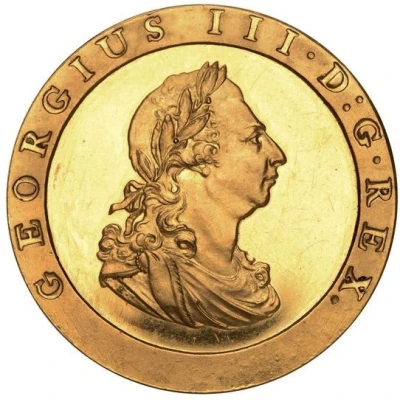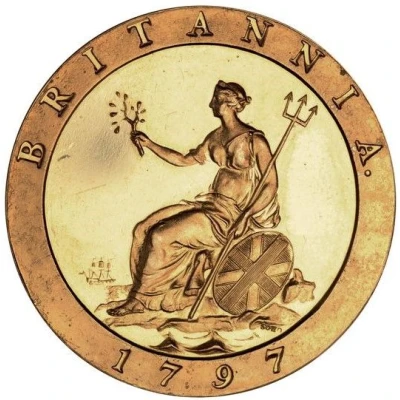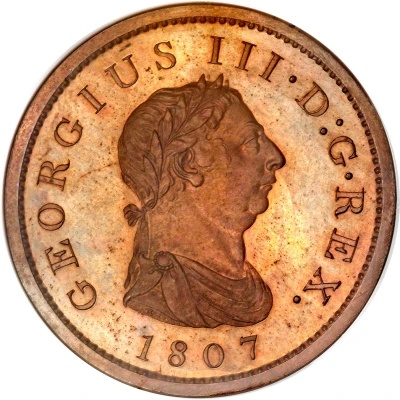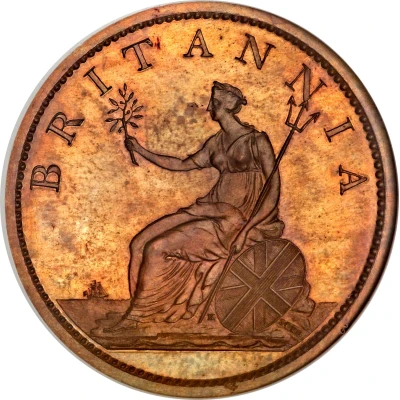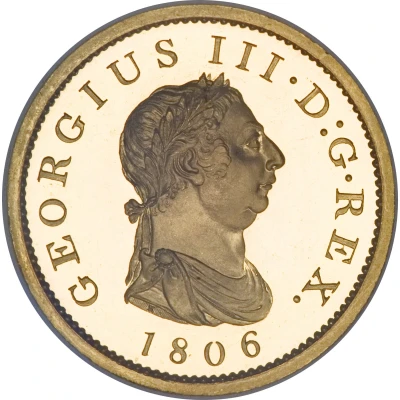
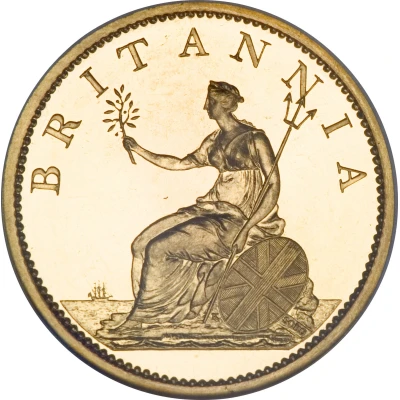

© Heritage Auctions
1 Penny - George III 4th Issue
| Gilding metal plated copper | 18.9 g | 34 mm |
| Issuer | United Kingdom (United Kingdom, British Overseas Territories and Crown Dependencies) |
|---|---|
| King | George III (1760-1820) |
| Type | Non-circulating coin |
| Years | 1806-1807 |
| Value | 1 Penny (1⁄240) |
| Currency | Pound sterling (1158-1970) |
| Composition | Gilding metal plated copper |
| Weight | 18.9 g |
| Diameter | 34 mm |
| Thickness | 3 mm |
| Shape | Round |
| Technique | Milled |
| Orientation | Coin alignment ↑↓ |
| Demonetized | 31 August 1971 |
| Updated | 2024-10-08 |
| Numista | N#70865 |
|---|---|
| Rarity index | 87% |
Reverse
Seated figure of Britannia facing left, with trident in left hand, olive branch in raised right hand, shield bearing Union flag resting at left, sea behind with ship to left, mint name on rock to right, legend above, plain exergue below.
Script: Latin
Lettering:
BRITANNIA
SOHO
Engraver: Conrad Heinrich Küchler
Edge
Obliquely grained or plain
Comment
The Fourth Issue of George III pennies (dated 1806-1808) features numerous patterns and proofs alongside regular copper currency pieces. Proof pennies, halfpennies and farthings were given to visiting dignitaries at Soho. It was a good way to publicise the fine workmanship of Boulton and Watt's fledgling mint and to cement it's place at the heart of the industrial revolution.The dies were heavily used and were thus reworked with the pennies being restruck for some years with no alteration to the date. Copper, bronzed and gilt proofs exist as well as some extremely rare proofs in silver, gold and platinum. For further details of the issue please refer to C.W. Peck's monumental work, "English Copper, Tin and Bronze Coins in the British Museum 1558 - 1958," second edition, 1970, page 364.
Interesting fact
The 1 Penny - George III (4th Issue) 1806-1807 coin features a unique design element - a small, raised " Proof" mark located below the year of mintage. This mark indicates that the coin was struck multiple times to create a highly detailed and polished finish, making it stand out from other coins minted during the same period.
